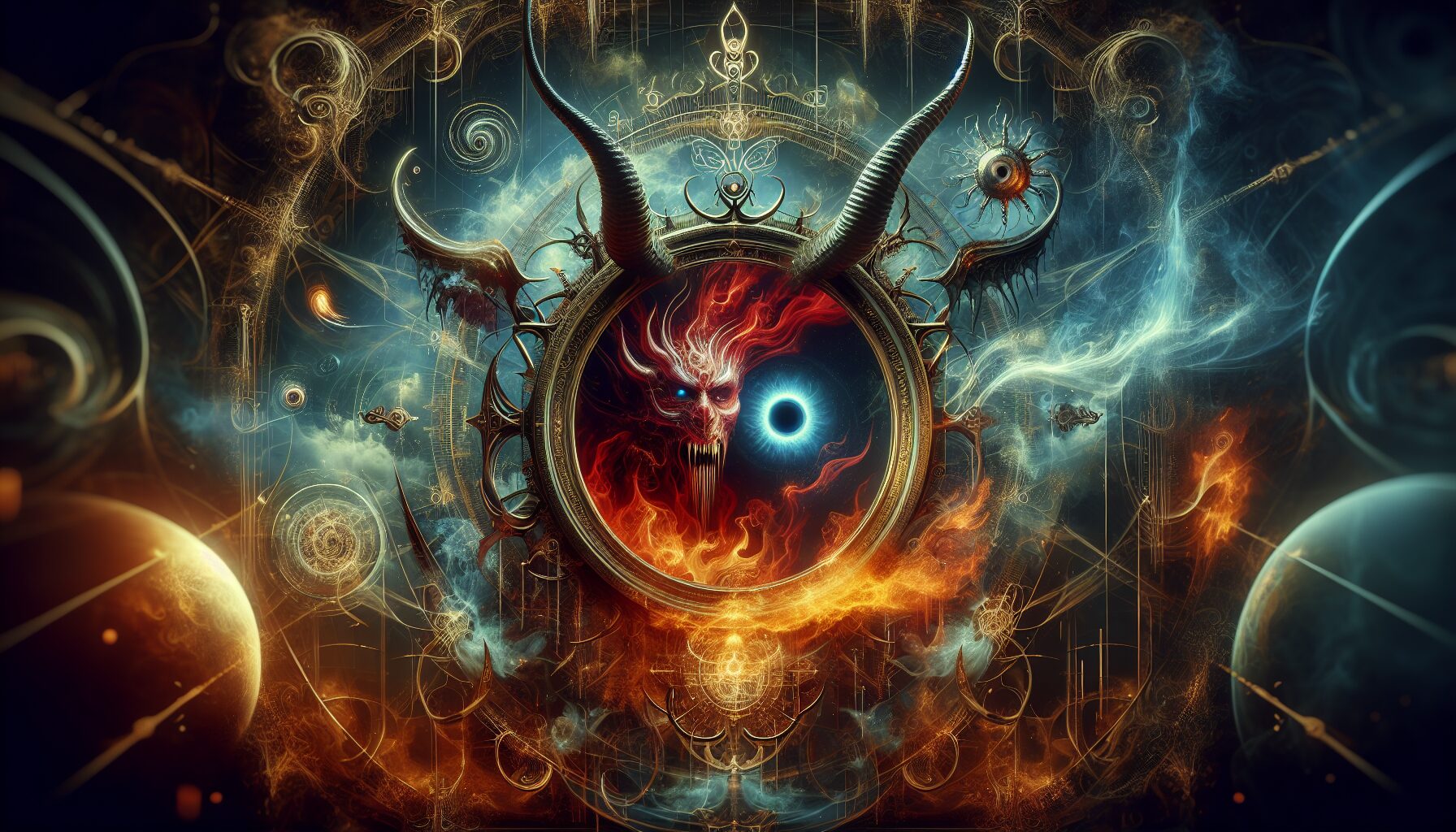The Demon’s Mirror – Archetypes of the Underworld
The underworld has captivated human imagination for millennia, serving as a repository for fears, anxieties, and dark reflections of the human condition. In this exploration, we delve into the rich tapestry of archetypes that populate these shadowy realms, drawing from mythology, literature, and psychology. From terrifying demons to cursed souls, the dwellers of the underworld echo the complexities and dualities of humanity itself.
The Descent into Darkness: Mythological Origins
Mythologies around the world depict the underworld as not only a final destination but also a realm of transformation. In Greek mythology, the underworld ruled by Hades was a place where the souls of the deceased resided, a domain as inevitable as it was forbidding. Hades himself is an archetype of the ruler of shadows, embodying both the impartiality and the inexorability of death.
Similarly, in Norse mythology, Hel, the underworld presided over by the goddess Hel, acts as a realm of both the living and the dead, a place where the boundaries between life and oblivion blur. These mythology-rich realms highlight the duality of the underworld as a place of both punishment and essential transformation.
The Archetypes of the Underworld
-
The Gatekeepers
The guardians of the underworld are often fearsome and imposing figures, such as the multi-headed canine Cerberus in Greek mythology, whose presence prevents souls from escaping and the living from intruding. In Egyptian mythology, Anubis serves as a protector of graves and a guide of souls, embodying both protection and judgment.
-
The Judges
Figures who weigh the hearts and deeds of souls are prevalent across cultures. In the Egyptian afterlife, Osiris oversees the weighing of the heart against the feather of Ma’at—truth. This archetype speaks to humanity’s intrinsic understanding of justice and moral reckoning beyond mortal life.
-
The Spirits of the Damned
These lost souls inhabit the shadowy recesses of the underworld, tormented by their choices or as victims of cruel fates. Their narratives serve as moral lessons or warnings about vice and folly. Dante’s Inferno richly depicts these archetypes, with sinners consigned to various circles of hell as representations of their earthly vices.
-
The Demonic Intruders
From infernal tempters to corruptive spirits, demons represent the chaotic forces of the underworld that intrude upon the mortal realm. They often act as adversaries to humanity, challenging moral integrity and resilience. In religious texts, demons test faith and seek to disrupt the cosmic order, encapsulating the eternal struggle between good and evil.
-
The Guides and Saviors
In many tales, figures emerge to lead others safely through the perils of the underworld. For instance, Dante’s Virgil is a guiding presence through the infernal depths to the hope of salvation. These archetypes symbolize wisdom, hope, and the possibilities of redemption and resurgence even in the darkest of times.
The Psychological Underpinnings
The archetypes of the underworld are not confined to mythology alone but also resonate deeply within the field of psychology. Carl Jung’s theories of the collective unconscious and archetypes suggest that these stories reflect universal patterns of human experience. Jung describes the “Shadow” as the dark side of the psyche, which we contain within us.
“The shadow is the moral problem that challenges the whole ego-personality, for no one can become conscious of the shadow without considerable moral effort.” – Carl Jung
These archetypes are embodiments of the shadow self, representing the repressed elements of our identity that, when acknowledged, lead to self-discovery and healing. The journey through the underworld becomes a metaphor for introspection—a necessary confrontation with the self’s darker aspects.
The Cultural Reflections
The portrayals of underworld archetypes across different cultures invite us to consider how societies have understood death, morality, and existence. The underworld, with its narratives, propels us to reflect on existential questions—what lies beyond our mortal experience, and how do our choices reverberate in the eternal schemes of existence?
Literature and film continue to engage with these themes, with stories from Edgar Allan Poe to modern cinematic portrayals like The Lord of the Rings and Harry Potter, where protagonists brave their own underworlds as part of their heroic journeys.
These cultural artifacts uphold the legacy of the archetype, each contributing to the evolving tapestry of how the underworld is perceived and imagined throughout human history.
Conclusion: Embracing the Shadows
The archetypes of the underworld reflect multidimensional aspects of life and the human psyche. They offer insight into the balance of light and dark, of creation and destruction, serving as invaluable mirrors to our deepest fears and hopes. Within these narratives lie profound truths about the self and society, inviting us to embrace both our light and our shadows for a fuller understanding of the human experience.
To explore these archetypes and their modern interpretations further, you might visit resources such as Britannica’s Underworld Page and Carl Jung’s works on archetypes and the collective unconscious.
Ultimately, the underworld, with its mystique and terror, serves as an essential component of human identity—a perpetual reflection of our inner struggles and quest for meaning beyond the veil of death.

Comments